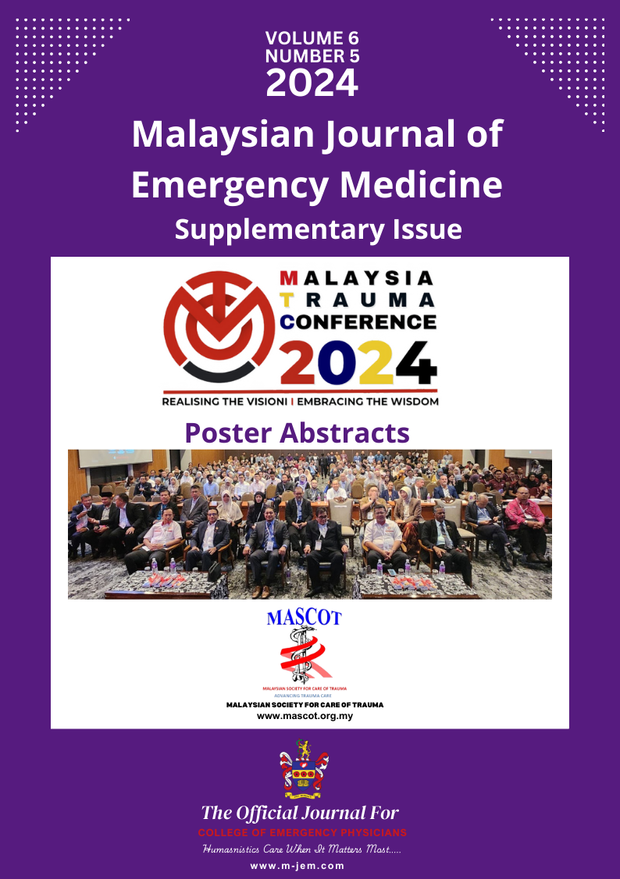A28 Pneumomediastinum In A Blunt Chest Trauma : A Case Report
Main Article Content
Abstract
INTRODUCTION
Pneumomediastinum is the presence of free air around mediastinal structure either spontaneous or secondary. Blunt trauma is the most common mechanism of injury, may occur up to 10% of the patients with severe blunt thoracic or cervical trauma.
CASE DESCRIPTION
A 33-year-old male presented to the emergency department following a motor vehicle accident in which he was a motorcyclist, collided with a car. He exhibited retrograde amnesia and reported pain over the back. Upon examination, the patient was tachypnoeic and hypotensive. There were reduced breath sounds over the left lung, with hyperresonance noted on percussion. Finger thoracostomy followed by chest tube insertion was performed. The patient was then intubated for respiratory failure. A chest radiograph showed pneumomediastinum. Computed tomography of the thorax and abdomen revealed bilateral hydropneumothorax, pneumomediastinum, a grade III splenic injury, and multiple thoracic spine fractures. The patient was treated conservatively and was able to be discharged after 2 weeks of hospitalization.
DISCUSSION
Pneumomediastinum can result from blunt or penetrating trauma, often linked to the Macklin effect, where increased intrathoracic pressure causes alveolar rupture and air leakage into the mediastinum. Diagnosis is challenging due to nonspecific symptoms like chest pain and dyspnea, which can mimic other conditions such as pneumothorax or hemothorax. Imaging techniques, particularly chest X-rays and CT scans, are crucial for identifying air in the mediastinum, but subtle cases may be missed. Comorbid injuries in trauma patients further complicate diagnosis, as they may obscure the signs of pneumomediastinum. Treatment varies based on the underlying cause and symptom severity. Mild cases may require only supportive care, while severe cases might necessitate surgery to address persistent air leaks. Surgical decisions involve balancing risks and potential complications, such as infections or additional air leaks, which require careful postoperative monitoring. Patient factors, including age and health status, can also influence treatment responses and management strategies.
CONCLUSION
Pneumomediastinum poses diagnostic challenges due to nonspecific symptoms that can mimic other conditions. Successful management requires careful consideration of individual patient factors and potential complications, emphasizing the need for a tailored, multidisciplinary approach.
Metrics
Article Details

This work is licensed under a Creative Commons Attribution-NonCommercial 4.0 International License.

